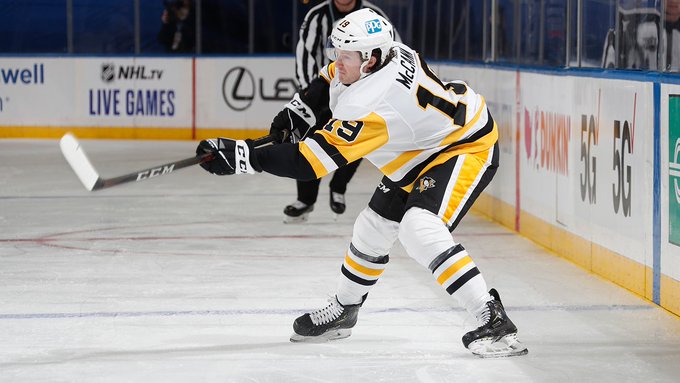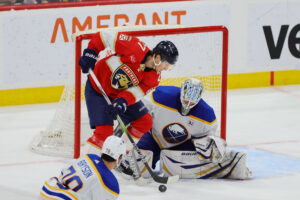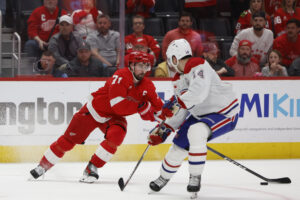NHL player development seems to always result in more questions than answers. How likely is it for a top pick to pan out? What makes a player a “steal”? Last Word On Hockey will be starting a new series on how to properly develop prospects from all different spots throughout the draft. This week’s piece involves draft picks in the back half of the first round and how they were used early in their careers.
NHL Player Development Of First-Round Picks
In the span of 2005 through 2015, there were 84 total selections made between 16th overall and 30th overall on forwards playing in North America. Looking at all 84 forwards, they were split into different categories. Those categories were “Forwards Deemed NHL-Ready and Brought In Immediately When Ready,” “Forwards Near NHL-Ready and Brought In Immediately When Near-Ready,” “Forwards Rushed Slightly,” “Forwards Rushed,” “Forwards Forced,” “A Little Patience,” “Patience,” and “Too Much Patience.”
There were 16 forwards who fell into the fourth category, “forced,” on the list. Of those 16 players, five made their NHL impacts in their DY+2 seasons. Those players are Jared McCann, Nick Foligno, Curtis Lazar, Jordan Caron, and Tom Wilson. In this piece, we will look at McCann and Foligno.
In this piece, we will be using stats from eliteprospects (raw stats) and hockey-reference (ice time). Additionally, the analytics we are using are as follows: even-strength offence goals above replacement (EVO), even-strength defence goals above replacement (EVD), wins above replacement (WAR) and goals above replacement (GAR). Those analytics are from evolving-hockey (subscription required).
NHL Player Development Of Jared McCann
McCann, drafted 24th overall in the 2014 NHL draft by the Vancouver Canucks, came out of the Soo Greyhounds organization of the OHL. In his DY-1 season, McCann scored 21 goals and 23 assists for 44 points in 64 games, for 0.688 points per game. That ranked 48th out of the aforementioned 84 forwards for DY-1 production. The following season, McCann scored 27 goals and 35 assists for 62 points in 64 games, for 0.969 points per game. That ranked 63rd out of those same 84 forwards for DY production. After getting drafted, McCann would play one more season in the OHL before making the jump to the NHL level.
In his last OHL season, he scored 34 goals and 47 assists for 81 points in 56 games, for 1.446 points per game. That ranked 13th out of 82 forwards still outside the NHL in DY+1 production. Again, following that season, McCann would jump to the NHL and play for the Canucks.
How Was McCann Used
McCann would play exclusively in the NHL in his first taste of professional hockey. Playing 69 NHL games, he would average 12:31 time on ice per game. In that role, he scored nine goals and assists for 18 points. Analytically, his EVO (2.2) was not bad at all. But, his EVD (-5.4) was terrible, and it is what held back the rest of his metrics. McCann’s WAR (-0.6) and GAR (-3.2) were anchored by his atrocious even-strength defensive impacts.
The following off-season, McCann would be sent to a new organization, the Florida Panthers. There, he would split time between the AHL and NHL. At the AHL level, he scored 11 goals and 14 assists for 25 points in 42 games. At the NHL level, he saw 29 games and averaged 11:38 per game. In a smaller role than the year prior, McCann’s production dipped to one goal and seven points. But, there was a silver lining. McCann’s EVO (1.4) did dip a bit, but his EVD (2.0) was incredibly improved. That led to his WAR (0.8) and GAR (4.3) being much better.
Embed from Getty Images
Back As Full-Time NHLer, Continues To Grow
McCann, in his third season, would play exclusively in the NHL. Across 68 games, he averaged 13:15 per game. In that role, he scored nine goals and 19 assists for 28 points. That is a decent stat line. But, the real impressiveness from this season came from his underlying stats. His EVO (1.5) was slightly improved from the year before, while his EVD (1.9) took a very small dip. But, his WAR (0.7) and GAR (3.6) also fell, though again, not by much. The impressive part is, he didn’t regress back to his rookie season totals. He showed that he can be consistent year-to-year, even if he plays more regularly.
Following that third season, in 2017-18, McCann would play just 46 more games with Florida before being traded. In that span, he scored eight goals and 10 assists for 18 points. McCann was sent to the Pittsburgh Penguins in the middle of the 2018-19 season and played the following two seasons with them as well. As a Penguin, he combined for 141 games played and scored 39 goals and 45 assists for 84 points. Last season, he was claimed in the Seattle Kraken expansion draft and would play the whole season with them. McCann scored 27 goals and 23 assists for 50 points in 73 games with the Kraken. His best season yet. Next season, he is expected to play an even bigger role with the Kraken and be a key figure for the team moving forward.
His NHL player development went well with the Canucks and Panthers, but it took him until joining the Penguins to start to realize his full potential. Now, with a weaker Kraken team, he has bigger minutes to prove why he was a first-round selection.
NHL Player Development Of Nick Foligno
Foligno, drafted 28th overall in the 2006 draft by the Ottawa Senators, came out of the OHL’s Sudbury Wolves organization. In his DY-1 season, Foligno scored 10 goals and 28 assists for 38 points in 65 games, for 0.585 points per game. That ranked 55th out of 84 forwards in DY-1 production. The following year, he scored 24 goals and 46 assists for 70 points in 65 games, for 1.077 points per game. That ranked 47th out of those same 84 forwards in DY production. After being drafted, Foligno would play just one more OHL season. That year, he would score 31 goals and 57 assists for 88 points in 66 games, for 1.333 points per game. That ranked 22nd out of the 82 forwards still outside of the NHL in DY+1 production.
How Was Foligno Used
In his first professional hockey season, Foligno would split between the AHL and NHL with the Senators. With the AHL’s Binghamton Senators, he scored six goals and 13 assists for 19 points in 28 games. When he played up with Ottawa, Foligno averaged just 9:10 per game across 45 contests. In a very small role, Foligno scored just six goals and nine total points. Analytically, the picture wasn’t much better. His EVO (0.4) was solid, but unimpressive, while his EVD (-0.6) was about average for rookie skaters. But all-in-all, he struggled, with a WAR (-0.2) and GAR (-1.3) that both fell below replacement level.
Embed from Getty Images
In his second season, Foligno would become a full-time NHLer. Across 81 games, he averaged 13:41 per game. While he still played a small role, in terms of ice time, he played a near-full season. With that, he scored 17 goals and 15 assists for 32 points, a strong stat line for a player who, as a rookie, played single-digit minutes while splitting between the minors and NHL level. Analytically, Foligno took big strides as well. His EVO (1.0) was slightly better, while his EVD (2.2) was really strong. The improved defensive impacts led his WAR (2.3) and GAR (12.7) to be exceptional. Those were very solid stats for a young kid and painted a picture of success in his future.
Fewer Games Played Leads To Slight Regression
Foligno would play just 61 games in his third professional season with the Senators. The missed time was due to two separate injuries. Despite that, he still averaged a slightly improved ice time of 14:19 per game. In that role, he scored nine goals and 17 assists for 26 points, which was a step-up in terms of per-game production. Analytically, his EVO (1.8) improved, alongside of his EVD (2.9). One would think that an overall improvement to those stats would improve his WAR and GAR, but that would not be the case. Instead, his WAR (0.9) and GAR (5.2) would see a dramatic fall. This is largely due to a regression in special teams play from year two into year three.
Following that third NHL season, in 2009-10, Foligno would play two full 82-game seasons with the Senators before leaving. In those seasons, he scored 29 goals and 52 assists for 81 points in 164 games, not a terrible stat line. After those two years, he joined the Columbus Blue Jackets. He would play with them for eight and a half seasons. In total, he scored 142 goals and 192 assists for 334 points in 599 games with Columbus. In the 2020-21 season, he was dealt mid-way through by the Jackets to the Toronto Maple Leafs, where he finished the season scoring four assists in seven games. Then, in the 2021 off-season, he signed a deal with the Boston Bruins for two years. Last season, he played 64 games and scored two goals and 11 assists for 13 points.
Junior league stats via Elite Prospects, NHL stats via Hockey Reference, NHL analytics via Evolving Hockey
Good news: Jared McCann has been activated off of injured reserve! pic.twitter.com/ANcWeSRfWu
— Pittsburgh Penguins (@penguins) March 20, 2021






